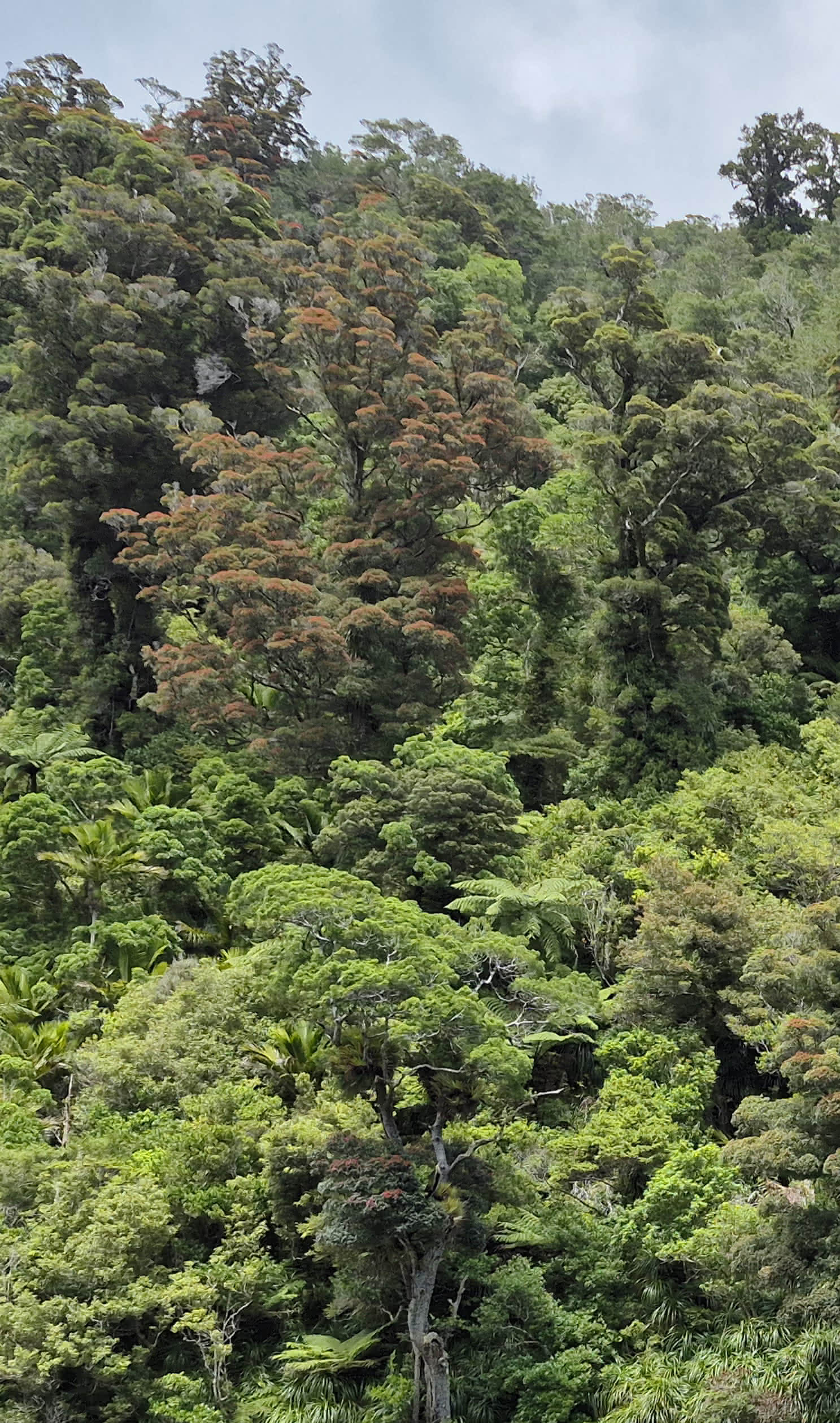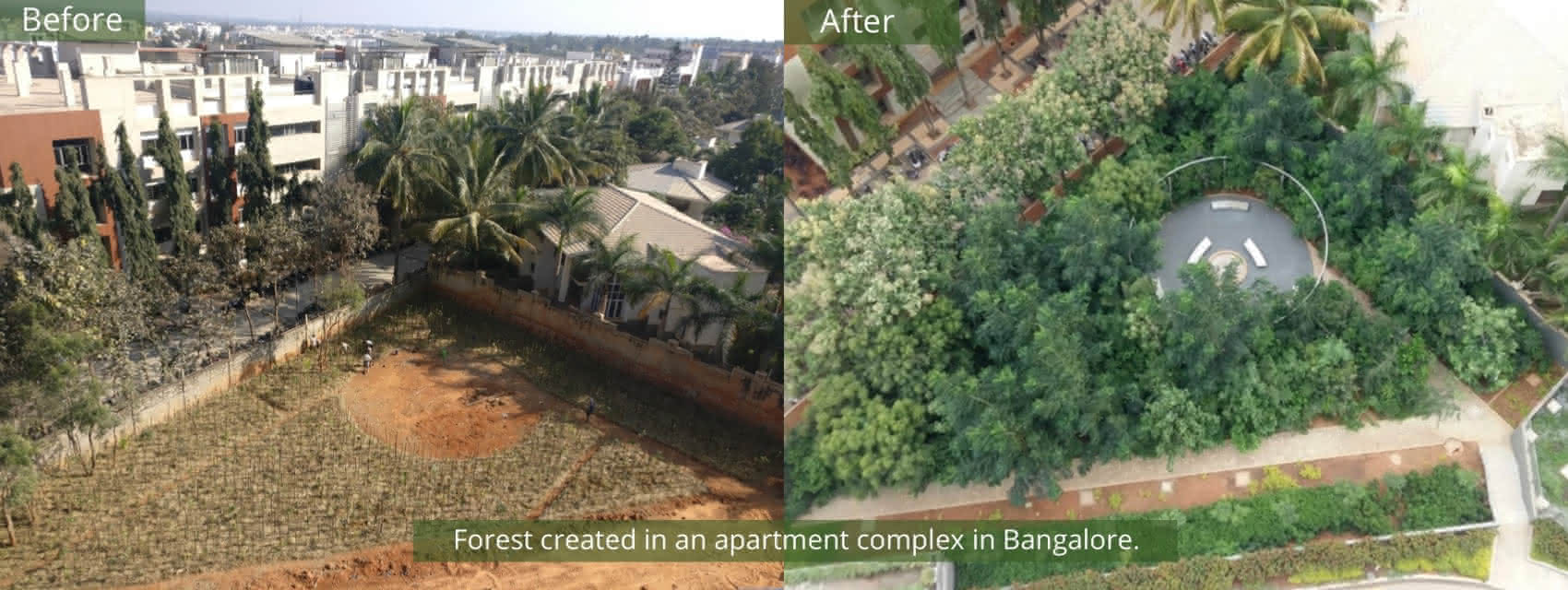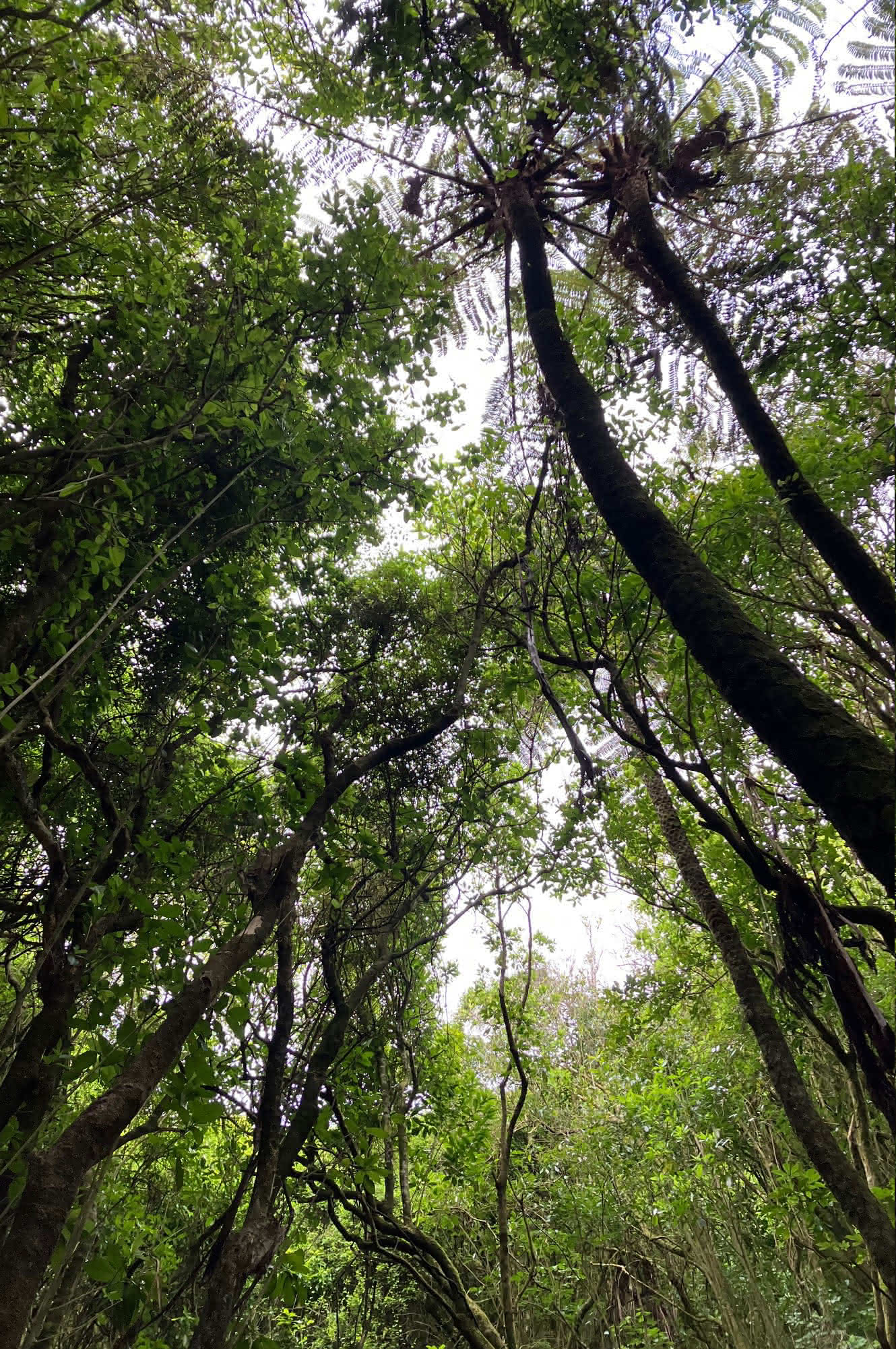
Canopy
Forest giants emerge from lower bird-filled canopies
Stream valleys
Moist, rich soils & shelter from topography allow palms, ferns & mosses to thrive
Understorey
Under the canopy is a sparse understorey of shrubs and ferns alive with insects & birds

Groundstorey
The groundfloor is rich with ferns, seedlings, lianes, mosses liverworts and ground insects

Underground
Below ground roots, Mycorrhizal fungi and micro organisms form a connected network
MICROFORESTS
A tool to improve urban environments
Globally, nationally and locally the vast areas of different types of
forest have been diminished with drastic effects on global weather
patterns.
In some locations the work of many institutions and communities
groups has fostered flourishing new forest & bird life. In many
areas, particularly the most urbanised & industrialised parts of
cities still have few trees, let alone forests.
Here is a tool to complement other regeneration methods & expand
the good effects of forests even further in the city.

Image from Afforestt project Bangalore
BENEFITS TO THE CLIMATE
Scientists say such ecosystems are key to meeting climate goals,
estimating that natural forests can store 40 times more carbon than
single-species plantations. The Miyawaki forests are designed to re-
generate land in far less time than the 70-plus years it takes a forest
to recover on its own.
BENEFITS TO OUR HEALTH
Being in forests can generate positive feelings, improve your
thinking, improve your mental health and have comprehensive
health benefits - UC Davis
MIYAWAKI METHOD
The theory of fast establishment of forests
in very small areas is based on research
by Japanese botanist Dr Akira Miyawaki.
He developed a method using close
planted, diverse native plants from the
locality, in small areas.
“For a natural plant community (society), the best
situation is where the plants compete with each other
and have to put up with each other. Our method of
planting trees followed the law of the forest“ – Akira
Miyawaki
Shubhendu Sharma built on the original
research seeing application in even
smaller areas. He founded Afforestt who
have facilitated hundreds of micro-forests
globally.
Density
Young plants are planted close together to
foster competition e.g. 30/m2
“In a natural forest, between 30 & 50 seedlings sprout
per square meter.... places in Borneo .... are between
500 & nearly 1,000 seedlings per square meter [sic].“
– Akira Miyawaki
100% Local
Species local to the area, ideally
ecosourced, are selected.
Advocates for the method say the miniature forests
grow 10 times faster, 100 times more biodiverse than
those planted conventionally.“
– Hanna Lewis
Diversity
A wide range of species, 30 or more, from
all layers of the local forest are mixed
together.
Soils
Soils are improved with biochar or
compost prior to planting. This fosters
Mycorrhiza & other micro-organisms &
provides long term nutrients until forest
establishes.
Size
The method enables forest to establish on
a compact site as small as 30m2.




